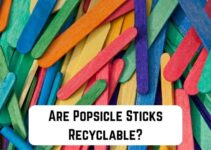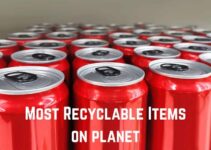Having a sheet protector is a must, especially if you work in the banking, financial, or accounting sector. You would definitely have a lot of paperwork lying around; with a sheet protector, you can protect the papers from getting lost, torn, or even confusing you.
There are various sheet protectors, and they vary in size, finish, weight, and loading style. Although many sheet protectors come in the generic letter size, there are sheet protectors for small paper pages and large ones.
There are four types of weights that sheet protectors come in; economy weight, standard weight, heavyweight, and super heavyweight. The loading styles of sheet protectors are; quick or rapid loading sheet protector, top loading sheet protector, and side loading sheet protector.
Nothing lasts forever, so when sheet protectors are not good enough to be used anymore, how do we dispose of them properly? It is imperative to know if sheet protectors are recyclable considering the number of sheet protectors in use at homes and in offices.
Are Sheet Protectors Recyclable?
Lately, there has been a significant increase in people’s awareness of the danger most of the products we use pose to the environment. There are now concerns as to which type of product is dangerous to the environment and products that are completely safe. So, are sheet protectors recyclable?
Before we can properly answer this question, we need to look at the type of materials sheet protectors are produced from. Sheet protectors are made from two materials; PVC plastic and polypropylene. Polypropylene sheet protector is the most commonly used because it is light and provides adequate protection for documents.
Polypropylene as a raw material is recyclable, but it is not easily recyclable when used to manufacture other products. Polypropylene is among the most popularly used plastics globally, yet only about one percent is recycled. So, the remaining ninety-nine percent of polypropylene ends up in landfills.
There are five steps involved if polypropylene sheet protectors must be recycled; assembling, categorization, cleaning, reprocessing, and re-production. The first stage is assembling; the sheet protectors must be collected and separated from other plastic products. This is to prevent contamination.
The first and second processes are usually conducted consecutively; during the collection process, the sheet protectors are categorized into recyclable and non-recyclable. After being sorted, the plastics are cleaned thoroughly to get rid of stains, contaminants, and other things that can ruin the entire batch.
The process of reprocessing involves melting the plastics at a very high temperature in an extruder and granulation for use in the re-production of new products. The entire process is tedious and expensive, so only a few recycling companies recycle polypropylene sheet protectors.
The other type of sheet protector is vinyl or PVC sheet protector. This is also very difficult to recycle, in fact, more difficult than polypropylene sheet protectors. Despite being more difficult to recycle, vinyl is recycled more than polypropylene.
After the PVC sheet protectors have been collected, sorted, and cleaned, they are melted down and reused for other vinyl products. You would need to do deep research to find recycling centers that recycle PVC and polypropylene sheet protectors.
What Type of Plastic are Sheet Protectors?
We mentioned earlier that sheet protectors are made from either PVC (vinyl) or polypropylene. These two plastics are very different in nature, quality, and characteristics. Before we take a deeper look at the two plastics, let us look at the sheet protectors.
PVC sheet protectors are very thick and more durable than polypropylene sheet protectors. If you have documents that require heavy protection, you should use a PVC sheet protector.
Polypropylene sheet protector is not as thick or durable as PVC sheet protector, but it will protect documents from scratches, spills, and other accidents.
Polypropylene is similar to a smooth and flexible sheet of scratch-resistant and tear-resistant paper. It is one of THE most neutral plastics used; it contains only two elements; hydrogen and carbon.
Polypropylene is manufactured from a propylene monomer, which is a waste by-product of the petroleum industry. The process of producing polypropylene is harmless, and there are no toxic emissions.
On the other hand, PVC is manufactured from polymerizing VCM (vinyl chloride monomer), involving the addition of toxic additives.
The entire process of PVC, from manufacturing to usage, and disposal has a negative impact on the environment because of the toxic additives present. For PVC to be stabilized for usage, a large number of heavy metals, like lead, is needed, and lead is a very toxic metal.
During the process of recycling, PVC releases toxic by-products such as chlorocarbons, dioxins, and hydrochloric acid when melted. While polypropylene generates only water and carbon dioxide when melted. Polypropylene has a higher tolerance for heat than PVC.
Are Sheet Protectors Bad For The Environment?
With the increasing concerns about the current state of the environment, there has been an increased awareness about safe and harmful products and how we can transition to using only environmentally-safe products.
For a product to be safe for the environment, it must have no negative effects right from the point of production to disposal.
We looked at the process of manufacturing the key materials used in producing sheet protectors, and we see that they both pose a significant threat to the environment.
Another characteristic of an environmentally friendly product is that it is biodegradable and compostable.
Neither PVC nor polypropylene sheet protector is biodegradable or compostable. None of them can be broken down by microorganisms and bacteria when disposed of in landfills. So, we can safely say sheet protectors are bad for the environment.
Can You Wash, Print, or Write on Sheet Protectors?
If you are among the people working in the banking, accounting, or financial sector and have to work with a lot of paperwork, you would happen to have a couple of sheet protectors to protect the documents.
You might be worried about writing on the sheet protector or even making the mistake of printing on it. If you have children around, one of your fears is them washing the sheet protectors. These are common, and you would want to know if they affect the sheet protectors in any way.
Yes, you can write on sheet protectors. However, it is best to use dry erase markers, so you can easily wipe the sheet protectors clean. If you use an indelible pen on sheet protectors, they will be ruined because you cannot get them off.
You can print on sheet protectors; however, you must be using an inkjet printer, and there must be enough ink to print on the sheet protector. You should never use a laser printer to print on sheet protectors. The laser in the printer will burn the sheet and can damage the printer as well.
If your printer is low on ink, it will not print on a sheet protector. Printing on a sheet protector is similar to printing on a piece of paper. As long as you set the sheet well in the printer, the printer is connected to a computer system, and there is enough ink in the printer, you are good to go.
No, you cannot wash sheet protectors, but you can clean them. Washing sheet protectors is not a good idea. If you want to clean your sheet protectors, you can use a soft cloth and gentle soap. Plastics do not go so well with detergents, so if you must use detergents, ensure it is in small quantities.
You can also use spray cleaners to wipe away all the debris from the sheet protector; ensure you use a non-abrasive cloth to wipe the sheets. So, yeah, you can write on, print on, and clean sheet protectors. It is important to avoid hot water and aggressive cleaners and detergents.
What Can You Do With Old Sheet Protectors?
Regardless of how important and useful a product or item is, it gets old and loses value with time. Whatever you do with that item at this point is very important; disposing of old items improperly is one of the major causes of environmental changes we are experiencing today.
Recycling is one of the best ways to dispose of old items properly. There is also another fantastic way to dispose of old and unused items by upcycling them. This is using the item for things other than what it was originally designed for.
1. Decorative Journal
This is one of the best and most efficient ways of upcycling old sheet protectors; you can create a decorative journal. To create this, you would need some sheet protectors, a paper punch, a sewing machine, bind it all, and scrap paper. The first thing to do is punch out shapes from the scrap paper and use double-sided paper.
If you cannot use double-sided paper, you can punch each shape twice and glue them together to form a double-sided shape. Next, trim the sheet protector to the size of the mini-book you must have created earlier. After trimming the sheet protector, you will lay the punched shape in one corner.
Sew a horizontal and vertical line across the sheet protector to the box in the punched shape; this will form the grid where you will place the other shapes in. Continue filling the grid boxes and sew horizontal and vertical lines to seal off the boxes. After you have filled the sheet protector, stitch the edges to cover it up.
Then, punch it with the bind it all and use it as pages in your mini-book. You can also use it as the front page of any book of your choice.
2. Recipe Page Protector
If you have had oil, water, and other things soil your recipe book while preparing food in the kitchen, you will find this very useful. You can slide your recipe pages into sheet protectors and use them while cooking.
You can also sort them and keep them organized in a binder by type of cuisine. If your cooking recipes spill on the sheet protector, you can easily wipe the stain off.
3. Window Clings
An exciting thing you can create with old sheet protectors for your children is a window cling. You would need a clear sheet protector, liquid food coloring, a small paintbrush, white craft glue, and liquid dish detergent. The first thing to do is to draw a picture and place it in the sheet protector.
Next, make a mixture of glue, food coloring, and dish detergents until you get the desired color. Paint on the sheet protector to form the picture. Ensure you paint really thick so it will be sturdy when you need to peel it off. Leave it to dry.
After it is dried, remove the window cling from the sheet protector and paste it to the window glass. You can peel it off and re-stick it to another window glass surface to create as many windows clings as desired.
Conclusion
We can protect our environment from further damage by recycling old and unwanted items we own. We are engaged in a lot of activities that pose significant threats to the safety of the environment, and we must endeavor to do our best to save the environment.
If you have been searching for proper ways to dispose of old sheet protectors, we have listed a couple of upcycling ideas you can try out. These ideas are cost-effective and a good way to protect our environment.






